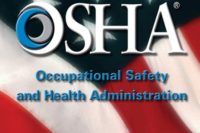Posted on The Pump Handle blog November 7, 2012.
http://scienceblogs.com/thepumphandle?
Hurray! The presidential election is over. Let’s hope this means that Obama administration officials will come out from under their beds and embrace their regulatory authority to issue some strong public health and environmental regulations.
At the Labor Department (DOL) there’s much work to do to expand workers’ rights, ensure workers’ lives and health are protected, and improve the information provided by its agencies.
Here’s my short version of my wish list for major DOL activities for the next 6 months:
1. MSHA issues a final rule to protect coal miners from black lung disease, and proposes a rule to protect all mine workers from exposure to respirable crystalline silica. MSHA’s proposed rule addressing black lung disease was published more than two years ago. The agency’s yet to publish a proposal on silica, despite projections in its most recent regulatory agenda that they’d do so in May 2012.
2. OSHA proposes a rule to protect workers who are exposed to respirable crystalline silica and holds a public hearing to receive feedback on it. The agency submitted its proposal to the White House’s Office of Information and Regulatory Affairs in February 2011—more than 630 days ago.
3. BLS announces its plans to improve the annual Survey of Occupational Injuries and Illnesses (SOII) by using additional statistical techniques to adjust for the well-documented undercounting of workplace injuries.
4. MSHA issues a final rule defining the criteria and procedures for repeated violators of mine safety and health regulationsto a workplace in a “pattern of violation” status. This provision of the 1977 Mine Act has only been used twice in MSHA’s history—in April 2011 to a coal mine in West Virginia and one in Kentucky—despite evidence that other mine operators are deserving of the special designation.
5. OSHA issues a final rule to protect construction workers from hazards of confined spaces, like storage tanks and pipe work. A rule of this sort has been in place since 1993 for workers employed in manufacturing and other industries, but no such rule is on the books for construction workers. It’s been five years since OSHA proposed a rule on this topic and held public hearings.
6. Secretary of Labor Hilda Solis reports on the resources devoted, funds spent and contact hours recorded in her promised safety education programs for agricultural workers aged 15 years and younger. The Secretary made that promise in April 2012 when her Department abruptly withdrewa proposed rule to protect these young workers from serious safety hazards. We’ve written about this topic e.g., here, here, here, here.
7. OSHA revises its Field Operations Manual (FOM) to incorporate the administrative changes it made in April 2010and October 2010to its formulas for calculating proposed penalties. The 22 states that administer their own OSHA programs for private sector employers have not been required to adopt comparable penalty changes. Apparently these State programs will not be asked officially to do so until federal OSHA makes the revisions to its FOM.
8. OSHA improves the inspection-specific information on its website by providing the current status of each case. The agency’s “Establishment Search” tool indicates whether a case is open or closed. But, when a case is still open long after the inspection date, the public is left in the dark as to why it remains open. Is it in contest and awaiting a trial date? Is the company following a payment plan for the penalty?
Getting the answer to why a case is still open means an individual has to bother the OSHA Area Office staff or the Regional public affairs officer for the answer. Look at the “Establishment Search” result for this December 2009 fatality case. The case is still open. One wouldn’t know from looking at this info that the case remains open because the employer has failed to pay the $2,400 penalty. The delinquent fine has been referred to a debt collection agency.






